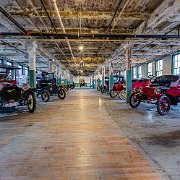
1 Ford Piquette Plant
In May 1904, after less than one year in operation, the board of the Ford Motor Company approved construction of a New England mill-style building, on a lot at the corner of Piquette and Beaubien Streets in Detroit, Michigan. The Detroit architectural firm of Smith, Hinchman, and Fields designed the building, which is three stories tall, 56 feet wide, and 402 feet long. The structure served the new firm for only a few years, yet it played a most important role in realizing Henry Ford's dream of an affordable car for the masses.
During the time Ford occupied the Piquette Avenue plant (1904-1910), the company assembled Ford Models B, C, F, N, R, S, and T there. In many ways, the Ford Model N was a precursor to the Model T in that it was an inexpensive, reliable, and innovative automobile. Ford first used vanadium steel extensively in the Model N.
During 1907, in a room at the northwest corner of the third floor of the "Piquette Plant", Henry Ford and a small team of dedicated engineers and draftsmen developed the Model T, the car that would change the world. Records at Dearborn show that much of the design and experimental work was done by Joseph Galamb, C. Harold Wills, Harry Love, C.J. Smith, Gus Degener and Peter E. Martin.[4] Plans for what became the "Car of the Century" were announced in the spring of 1908.
The first production Model T was built at Piquette on September 27, 1908. Peter E. Martin was plant superintendent and production manager, Charles E. Sorensen was Martin's assistant and handled production development. Only 11 cars were built there the following month. However, demand quickly grew, and it soon became apparent that the facility could no longer keep up with increasing output.
In January 1910, after assembling nearly 12,000 Model Ts at the Piquette Avenue plant, Henry Ford moved production to his new complex in Highland Park, Michigan. There, he introduced the moving assembly line in 1913-1914 and would eventually produce 15 million Model T Fords.
In May 1904, after less than one year in operation, the board of the Ford Motor Company approved construction of a New England mill-style building, on a lot at the corner of Piquette and Beaubien Streets in Detroit, Michigan. The Detroit architectural firm of Smith, Hinchman, and Fields designed the building, which is three stories tall, 56 feet wide, and 402 feet long. The structure served the new firm for only a few years, yet it played a most important role in realizing Henry Ford's dream of an affordable car for the masses.
During the time Ford occupied the Piquette Avenue plant (1904-1910), the company assembled Ford Models B, C, F, N, R, S, and T there. In many ways, the Ford Model N was a precursor to the Model T in that it was an inexpensive, reliable, and innovative automobile. Ford first used vanadium steel extensively in the Model N.
During 1907, in a room at the northwest corner of the third floor of the "Piquette Plant", Henry Ford and a small team of dedicated engineers and draftsmen developed the Model T, the car that would change the world. Records at Dearborn show that much of the design and experimental work was done by Joseph Galamb, C. Harold Wills, Harry Love, C.J. Smith, Gus Degener and Peter E. Martin.[4] Plans for what became the "Car of the Century" were announced in the spring of 1908.
The first production Model T was built at Piquette on September 27, 1908. Peter E. Martin was plant superintendent and production manager, Charles E. Sorensen was Martin's assistant and handled production development. Only 11 cars were built there the following month. However, demand quickly grew, and it soon became apparent that the facility could no longer keep up with increasing output.
In January 1910, after assembling nearly 12,000 Model Ts at the Piquette Avenue plant, Henry Ford moved production to his new complex in Highland Park, Michigan. There, he introduced the moving assembly line in 1913-1914 and would eventually produce 15 million Model T Fords.
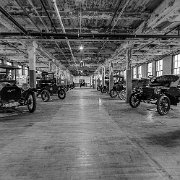
2 Ford Piquette Plant
In May 1904, after less than one year in operation, the board of the Ford Motor Company approved construction of a New England mill-style building, on a lot at the corner of Piquette and Beaubien Streets in Detroit, Michigan. The Detroit architectural firm of Smith, Hinchman, and Fields designed the building, which is three stories tall, 56 feet wide, and 402 feet long. The structure served the new firm for only a few years, yet it played a most important role in realizing Henry Ford's dream of an affordable car for the masses.
During the time Ford occupied the Piquette Avenue plant (1904-1910), the company assembled Ford Models B, C, F, N, R, S, and T there. In many ways, the Ford Model N was a precursor to the Model T in that it was an inexpensive, reliable, and innovative automobile. Ford first used vanadium steel extensively in the Model N.
During 1907, in a room at the northwest corner of the third floor of the "Piquette Plant", Henry Ford and a small team of dedicated engineers and draftsmen developed the Model T, the car that would change the world. Records at Dearborn show that much of the design and experimental work was done by Joseph Galamb, C. Harold Wills, Harry Love, C.J. Smith, Gus Degener and Peter E. Martin.[4] Plans for what became the "Car of the Century" were announced in the spring of 1908.
The first production Model T was built at Piquette on September 27, 1908. Peter E. Martin was plant superintendent and production manager, Charles E. Sorensen was Martin's assistant and handled production development. Only 11 cars were built there the following month. However, demand quickly grew, and it soon became apparent that the facility could no longer keep up with increasing output.
In January 1910, after assembling nearly 12,000 Model Ts at the Piquette Avenue plant, Henry Ford moved production to his new complex in Highland Park, Michigan. There, he introduced the moving assembly line in 1913-1914 and would eventually produce 15 million Model T Fords.
In May 1904, after less than one year in operation, the board of the Ford Motor Company approved construction of a New England mill-style building, on a lot at the corner of Piquette and Beaubien Streets in Detroit, Michigan. The Detroit architectural firm of Smith, Hinchman, and Fields designed the building, which is three stories tall, 56 feet wide, and 402 feet long. The structure served the new firm for only a few years, yet it played a most important role in realizing Henry Ford's dream of an affordable car for the masses.
During the time Ford occupied the Piquette Avenue plant (1904-1910), the company assembled Ford Models B, C, F, N, R, S, and T there. In many ways, the Ford Model N was a precursor to the Model T in that it was an inexpensive, reliable, and innovative automobile. Ford first used vanadium steel extensively in the Model N.
During 1907, in a room at the northwest corner of the third floor of the "Piquette Plant", Henry Ford and a small team of dedicated engineers and draftsmen developed the Model T, the car that would change the world. Records at Dearborn show that much of the design and experimental work was done by Joseph Galamb, C. Harold Wills, Harry Love, C.J. Smith, Gus Degener and Peter E. Martin.[4] Plans for what became the "Car of the Century" were announced in the spring of 1908.
The first production Model T was built at Piquette on September 27, 1908. Peter E. Martin was plant superintendent and production manager, Charles E. Sorensen was Martin's assistant and handled production development. Only 11 cars were built there the following month. However, demand quickly grew, and it soon became apparent that the facility could no longer keep up with increasing output.
In January 1910, after assembling nearly 12,000 Model Ts at the Piquette Avenue plant, Henry Ford moved production to his new complex in Highland Park, Michigan. There, he introduced the moving assembly line in 1913-1914 and would eventually produce 15 million Model T Fords.
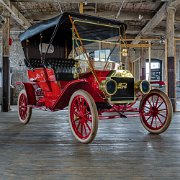
3 Ford Piquette Plant
In May 1904, after less than one year in operation, the board of the Ford Motor Company approved construction of a New England mill-style building, on a lot at the corner of Piquette and Beaubien Streets in Detroit, Michigan. The Detroit architectural firm of Smith, Hinchman, and Fields designed the building, which is three stories tall, 56 feet wide, and 402 feet long. The structure served the new firm for only a few years, yet it played a most important role in realizing Henry Ford's dream of an affordable car for the masses.
In May 1904, after less than one year in operation, the board of the Ford Motor Company approved construction of a New England mill-style building, on a lot at the corner of Piquette and Beaubien Streets in Detroit, Michigan. The Detroit architectural firm of Smith, Hinchman, and Fields designed the building, which is three stories tall, 56 feet wide, and 402 feet long. The structure served the new firm for only a few years, yet it played a most important role in realizing Henry Ford's dream of an affordable car for the masses.
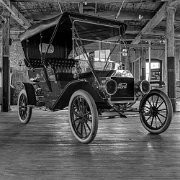
4 Ford Piquette Plant
In May 1904, after less than one year in operation, the board of the Ford Motor Company approved construction of a New England mill-style building, on a lot at the corner of Piquette and Beaubien Streets in Detroit, Michigan. The Detroit architectural firm of Smith, Hinchman, and Fields designed the building, which is three stories tall, 56 feet wide, and 402 feet long. The structure served the new firm for only a few years, yet it played a most important role in realizing Henry Ford's dream of an affordable car for the masses.
In May 1904, after less than one year in operation, the board of the Ford Motor Company approved construction of a New England mill-style building, on a lot at the corner of Piquette and Beaubien Streets in Detroit, Michigan. The Detroit architectural firm of Smith, Hinchman, and Fields designed the building, which is three stories tall, 56 feet wide, and 402 feet long. The structure served the new firm for only a few years, yet it played a most important role in realizing Henry Ford's dream of an affordable car for the masses.
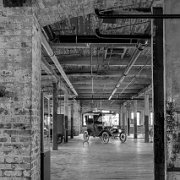
5 Ford Piquette Plant
In May 1904, after less than one year in operation, the board of the Ford Motor Company approved construction of a New England mill-style building, on a lot at the corner of Piquette and Beaubien Streets in Detroit, Michigan. The Detroit architectural firm of Smith, Hinchman, and Fields designed the building, which is three stories tall, 56 feet wide, and 402 feet long. The structure served the new firm for only a few years, yet it played a most important role in realizing Henry Ford's dream of an affordable car for the masses.
In May 1904, after less than one year in operation, the board of the Ford Motor Company approved construction of a New England mill-style building, on a lot at the corner of Piquette and Beaubien Streets in Detroit, Michigan. The Detroit architectural firm of Smith, Hinchman, and Fields designed the building, which is three stories tall, 56 feet wide, and 402 feet long. The structure served the new firm for only a few years, yet it played a most important role in realizing Henry Ford's dream of an affordable car for the masses.
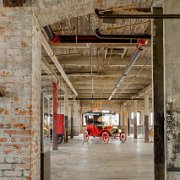
6 Ford Piquette Plant
In May 1904, after less than one year in operation, the board of the Ford Motor Company approved construction of a New England mill-style building, on a lot at the corner of Piquette and Beaubien Streets in Detroit, Michigan. The Detroit architectural firm of Smith, Hinchman, and Fields designed the building, which is three stories tall, 56 feet wide, and 402 feet long. The structure served the new firm for only a few years, yet it played a most important role in realizing Henry Ford's dream of an affordable car for the masses.
In May 1904, after less than one year in operation, the board of the Ford Motor Company approved construction of a New England mill-style building, on a lot at the corner of Piquette and Beaubien Streets in Detroit, Michigan. The Detroit architectural firm of Smith, Hinchman, and Fields designed the building, which is three stories tall, 56 feet wide, and 402 feet long. The structure served the new firm for only a few years, yet it played a most important role in realizing Henry Ford's dream of an affordable car for the masses.
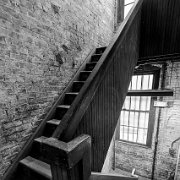
7 Ford Piquette Plant
In May 1904, after less than one year in operation, the board of the Ford Motor Company approved construction of a New England mill-style building, on a lot at the corner of Piquette and Beaubien Streets in Detroit, Michigan. The Detroit architectural firm of Smith, Hinchman, and Fields designed the building, which is three stories tall, 56 feet wide, and 402 feet long. The structure served the new firm for only a few years, yet it played a most important role in realizing Henry Ford's dream of an affordable car for the masses.
In May 1904, after less than one year in operation, the board of the Ford Motor Company approved construction of a New England mill-style building, on a lot at the corner of Piquette and Beaubien Streets in Detroit, Michigan. The Detroit architectural firm of Smith, Hinchman, and Fields designed the building, which is three stories tall, 56 feet wide, and 402 feet long. The structure served the new firm for only a few years, yet it played a most important role in realizing Henry Ford's dream of an affordable car for the masses.
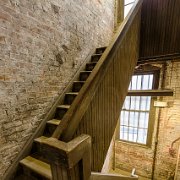
8 Ford Piquette Plant
In May 1904, after less than one year in operation, the board of the Ford Motor Company approved construction of a New England mill-style building, on a lot at the corner of Piquette and Beaubien Streets in Detroit, Michigan. The Detroit architectural firm of Smith, Hinchman, and Fields designed the building, which is three stories tall, 56 feet wide, and 402 feet long. The structure served the new firm for only a few years, yet it played a most important role in realizing Henry Ford's dream of an affordable car for the masses.
In May 1904, after less than one year in operation, the board of the Ford Motor Company approved construction of a New England mill-style building, on a lot at the corner of Piquette and Beaubien Streets in Detroit, Michigan. The Detroit architectural firm of Smith, Hinchman, and Fields designed the building, which is three stories tall, 56 feet wide, and 402 feet long. The structure served the new firm for only a few years, yet it played a most important role in realizing Henry Ford's dream of an affordable car for the masses.
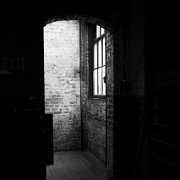
9 Ford Piquette Plant
In May 1904, after less than one year in operation, the board of the Ford Motor Company approved construction of a New England mill-style building, on a lot at the corner of Piquette and Beaubien Streets in Detroit, Michigan. The Detroit architectural firm of Smith, Hinchman, and Fields designed the building, which is three stories tall, 56 feet wide, and 402 feet long. The structure served the new firm for only a few years, yet it played a most important role in realizing Henry Ford's dream of an affordable car for the masses.
In May 1904, after less than one year in operation, the board of the Ford Motor Company approved construction of a New England mill-style building, on a lot at the corner of Piquette and Beaubien Streets in Detroit, Michigan. The Detroit architectural firm of Smith, Hinchman, and Fields designed the building, which is three stories tall, 56 feet wide, and 402 feet long. The structure served the new firm for only a few years, yet it played a most important role in realizing Henry Ford's dream of an affordable car for the masses.
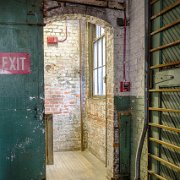
10 Ford Piquette Plant
In May 1904, after less than one year in operation, the board of the Ford Motor Company approved construction of a New England mill-style building, on a lot at the corner of Piquette and Beaubien Streets in Detroit, Michigan. The Detroit architectural firm of Smith, Hinchman, and Fields designed the building, which is three stories tall, 56 feet wide, and 402 feet long. The structure served the new firm for only a few years, yet it played a most important role in realizing Henry Ford's dream of an affordable car for the masses.
In May 1904, after less than one year in operation, the board of the Ford Motor Company approved construction of a New England mill-style building, on a lot at the corner of Piquette and Beaubien Streets in Detroit, Michigan. The Detroit architectural firm of Smith, Hinchman, and Fields designed the building, which is three stories tall, 56 feet wide, and 402 feet long. The structure served the new firm for only a few years, yet it played a most important role in realizing Henry Ford's dream of an affordable car for the masses.

11 Ford Piquette Plant
In May 1904, after less than one year in operation, the board of the Ford Motor Company approved construction of a New England mill-style building, on a lot at the corner of Piquette and Beaubien Streets in Detroit, Michigan. The Detroit architectural firm of Smith, Hinchman, and Fields designed the building, which is three stories tall, 56 feet wide, and 402 feet long. The structure served the new firm for only a few years, yet it played a most important role in realizing Henry Ford's dream of an affordable car for the masses.
In May 1904, after less than one year in operation, the board of the Ford Motor Company approved construction of a New England mill-style building, on a lot at the corner of Piquette and Beaubien Streets in Detroit, Michigan. The Detroit architectural firm of Smith, Hinchman, and Fields designed the building, which is three stories tall, 56 feet wide, and 402 feet long. The structure served the new firm for only a few years, yet it played a most important role in realizing Henry Ford's dream of an affordable car for the masses.
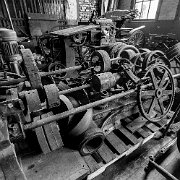
12 Ford Piquette Plant
In May 1904, after less than one year in operation, the board of the Ford Motor Company approved construction of a New England mill-style building, on a lot at the corner of Piquette and Beaubien Streets in Detroit, Michigan. The Detroit architectural firm of Smith, Hinchman, and Fields designed the building, which is three stories tall, 56 feet wide, and 402 feet long. The structure served the new firm for only a few years, yet it played a most important role in realizing Henry Ford's dream of an affordable car for the masses.
In May 1904, after less than one year in operation, the board of the Ford Motor Company approved construction of a New England mill-style building, on a lot at the corner of Piquette and Beaubien Streets in Detroit, Michigan. The Detroit architectural firm of Smith, Hinchman, and Fields designed the building, which is three stories tall, 56 feet wide, and 402 feet long. The structure served the new firm for only a few years, yet it played a most important role in realizing Henry Ford's dream of an affordable car for the masses.
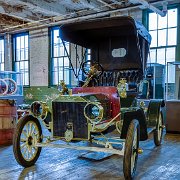
13 Ford Piquette Plant
In May 1904, after less than one year in operation, the board of the Ford Motor Company approved construction of a New England mill-style building, on a lot at the corner of Piquette and Beaubien Streets in Detroit, Michigan. The Detroit architectural firm of Smith, Hinchman, and Fields designed the building, which is three stories tall, 56 feet wide, and 402 feet long. The structure served the new firm for only a few years, yet it played a most important role in realizing Henry Ford's dream of an affordable car for the masses.
In May 1904, after less than one year in operation, the board of the Ford Motor Company approved construction of a New England mill-style building, on a lot at the corner of Piquette and Beaubien Streets in Detroit, Michigan. The Detroit architectural firm of Smith, Hinchman, and Fields designed the building, which is three stories tall, 56 feet wide, and 402 feet long. The structure served the new firm for only a few years, yet it played a most important role in realizing Henry Ford's dream of an affordable car for the masses.
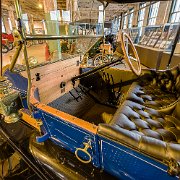
14 Ford Piquette Plant
In May 1904, after less than one year in operation, the board of the Ford Motor Company approved construction of a New England mill-style building, on a lot at the corner of Piquette and Beaubien Streets in Detroit, Michigan. The Detroit architectural firm of Smith, Hinchman, and Fields designed the building, which is three stories tall, 56 feet wide, and 402 feet long. The structure served the new firm for only a few years, yet it played a most important role in realizing Henry Ford's dream of an affordable car for the masses.
In May 1904, after less than one year in operation, the board of the Ford Motor Company approved construction of a New England mill-style building, on a lot at the corner of Piquette and Beaubien Streets in Detroit, Michigan. The Detroit architectural firm of Smith, Hinchman, and Fields designed the building, which is three stories tall, 56 feet wide, and 402 feet long. The structure served the new firm for only a few years, yet it played a most important role in realizing Henry Ford's dream of an affordable car for the masses.
Ford Piquette Plant